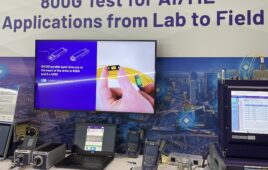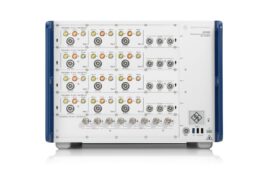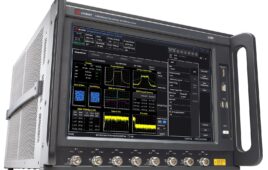Universities and industry engineers strive to understand how sub-THz signal behave in the real world.
When 5G research commenced, engineers in industry and academia developed systems to measure mmWave signal propagation in the field. Now, the same research goes on, but at frequencies of 100 GHz to 330 GHz.
Rohde & Schwarz recently contributed to the so-called “sub-THz” research effort by making measurements at 158 GHz (D-band) and 300 GHz (H-band) at the Rohde & Schwarz campus in Munich, Germany. The company has contributed its first set of measurements to the ITU-R Working Party 5D (W5PD) report on “Technical feasibility of International Mobile Telecommunications (IMT) in bands above 100 GHz.” The goal of the activity is to study and provide information on the technical feasibility of mobile cellular technologies in bands above 92 GHz. The report will be presented at the International Telecommunication Union (ITU) World Radio Conference 2023 (WRC23) in Dubai. Rohde & Schwarz expects that conference attendees will also discuss additional frequency bands beyond 100 GHz for allocation at WRC27. So far, engineers have evaluated channel models only up to 100 GHz. If 6G is to bring new use cases such as holographic images to the public, Higher frequencies and the additional bandwidth they bring will be needed.

Contributing to the 6G research effort, Rohde & Schwarz conducted channel-sounding measurements at 158 GHz and 300 GHz at its headquarters in Munich.
According to Rohde & Schwarz, the measurement campaign performed in Munich can contribute to a better understanding of signal propagation in the millimeter and sub-millimeter (sub-THz and THz) mobile radio channels. The company has received an experimental license from the Bundesnetzagentur, the German federal network agency. The license encompasses frequencies in the sub-THz region such as the D-band (110 GHz to 170 GHz) and H-band (220 GHz to 330 GHz), as well as in the W-band (75 GHz to 110 GHz), FR2 (mmWave), FR3 (7 GHz to 24 GHz) and the industrial frequency band in Germany, 3.7 GHz to 3.8 GHz.
At the most recent 6G Symposium and Brooklyn 6G Summit held in October 2022, attendees discussed possible applications for sub-THz frequencies such as digital twins and the nebulous “metaverse.” They also saw demonstrations of data transmissions at sub-THz frequencies. If progress moves along as expected, standardization work for 6G should commence by 2028 with initial deployment in 2030. Until then, we’ll need more research into sub-THz frequencies taking place at Rohde & Schwarz and Northeastern University, among many others.





Tell Us What You Think!